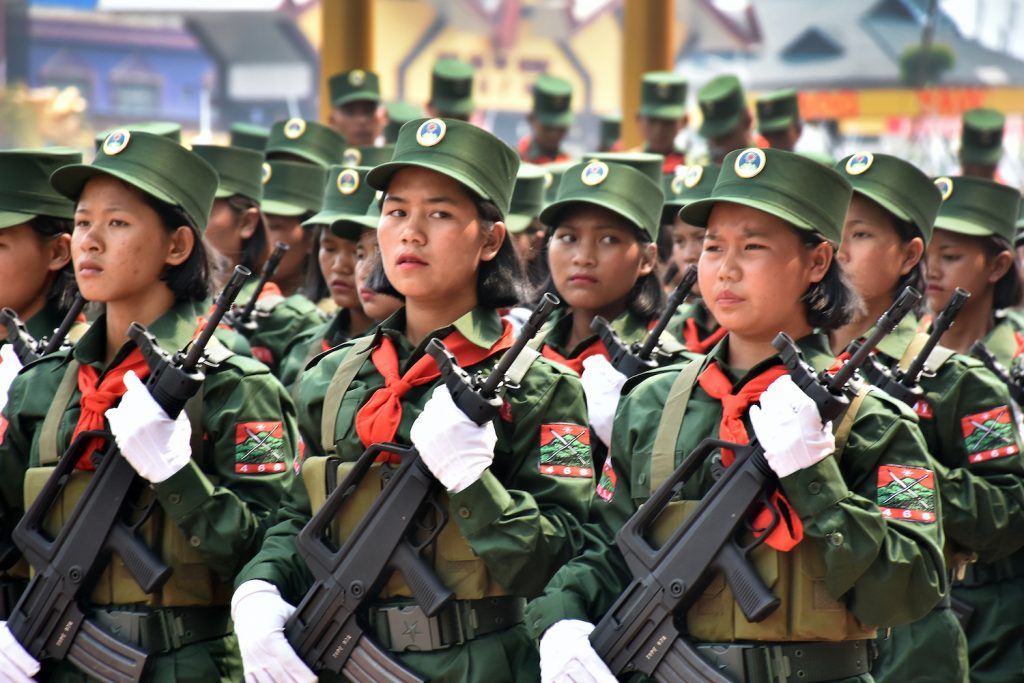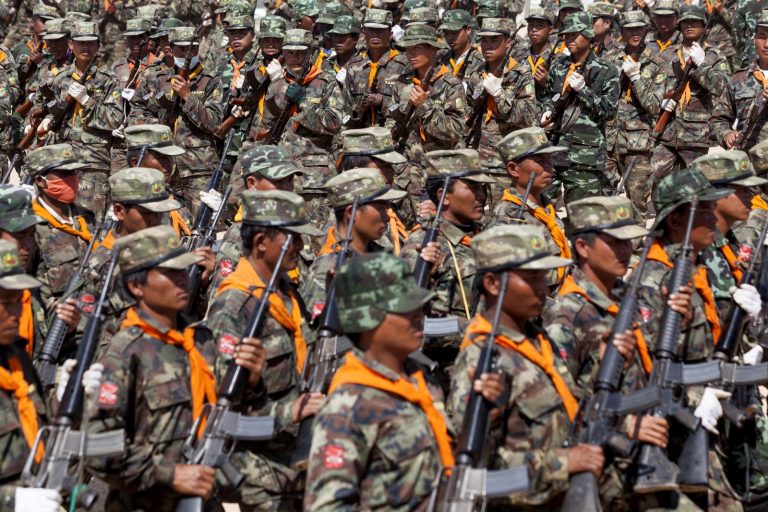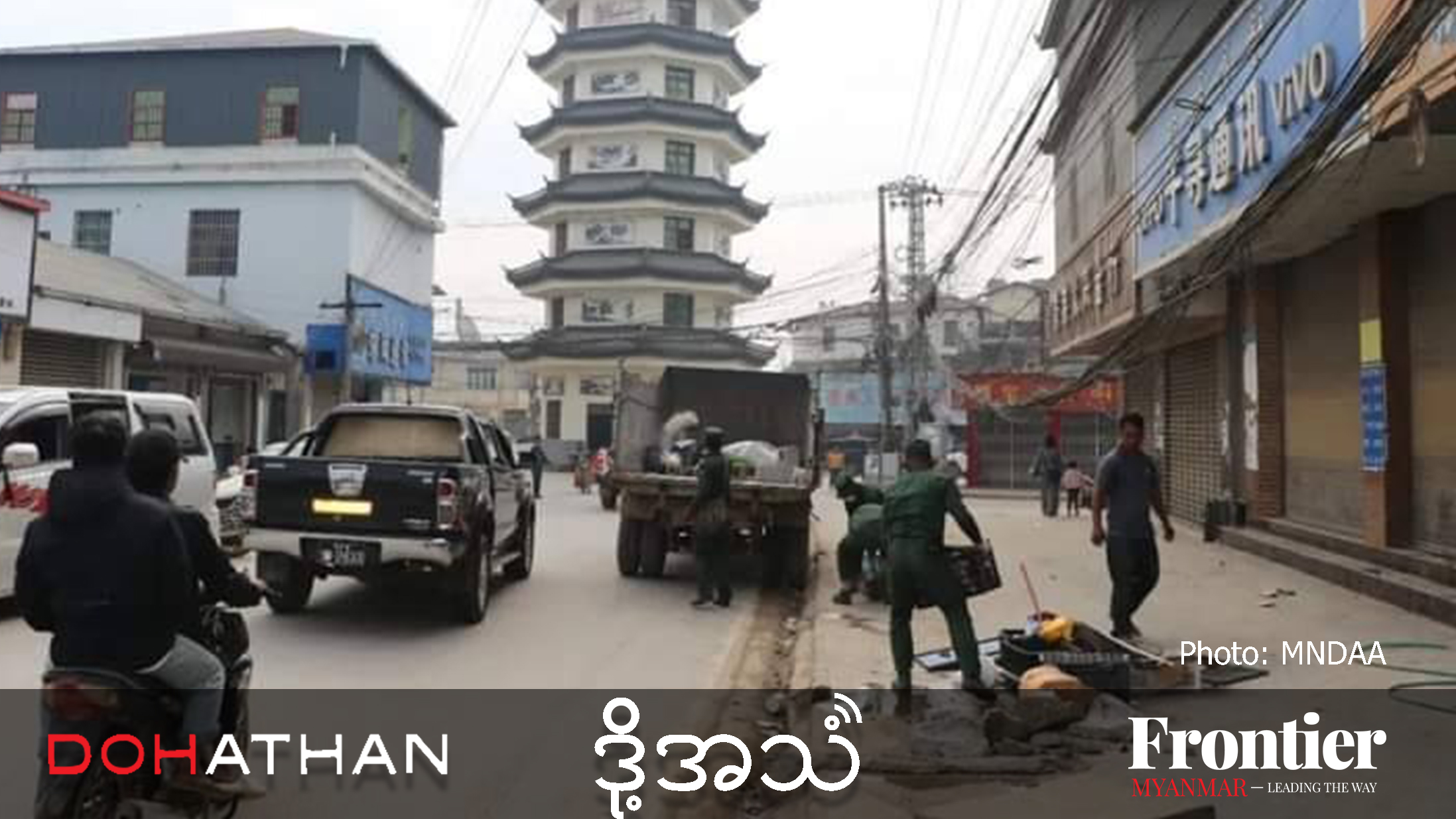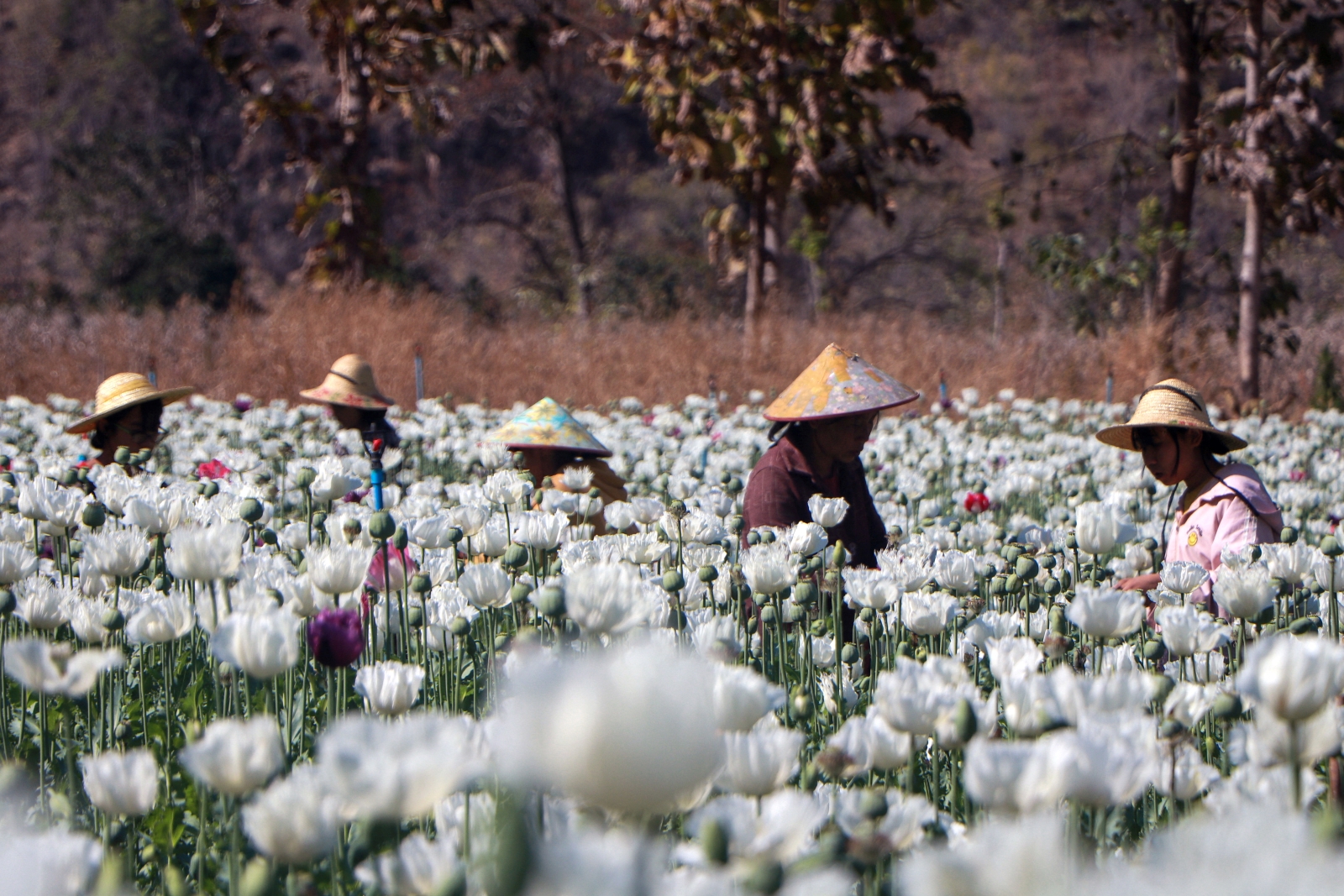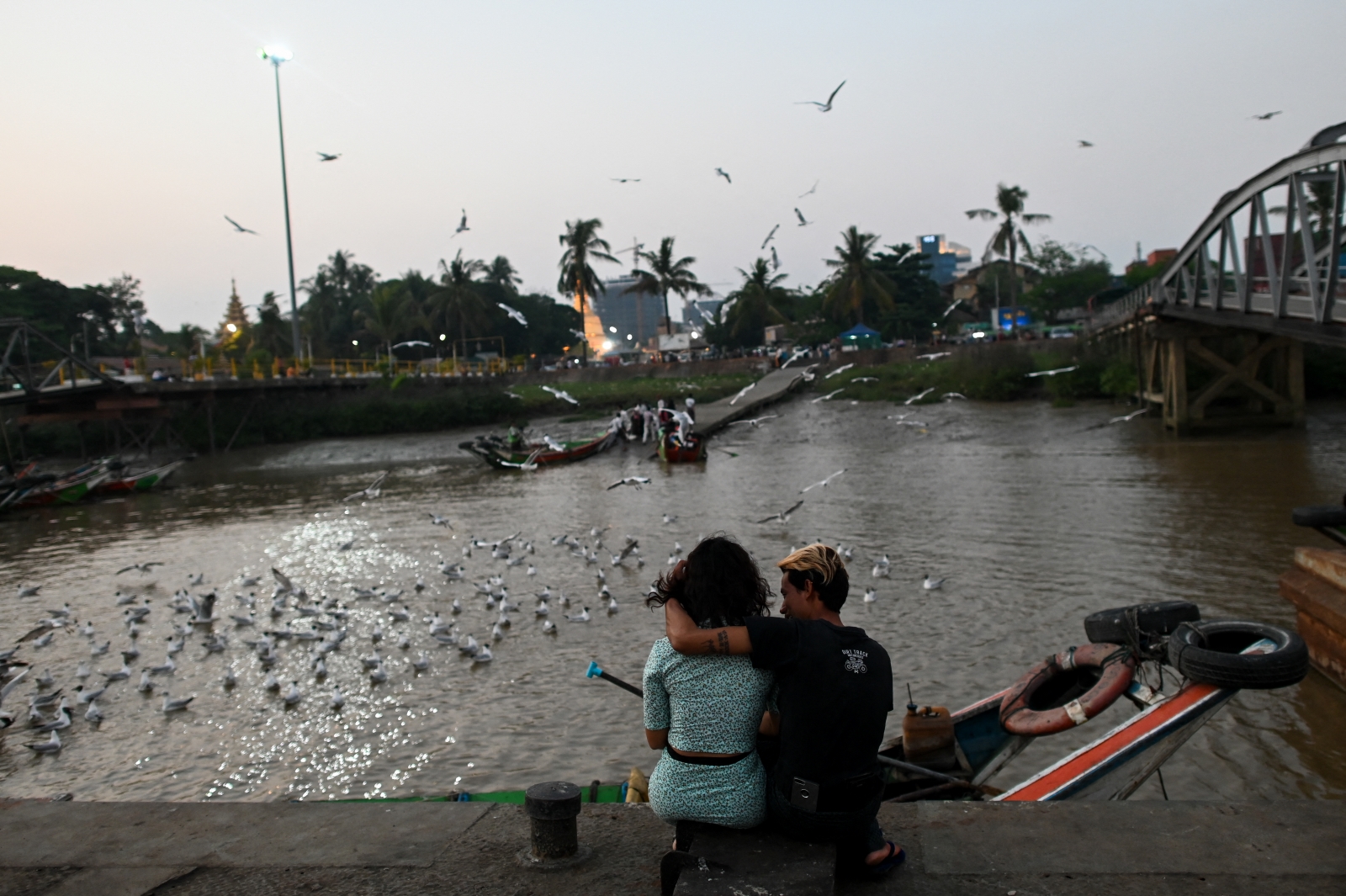BOOK REVIEW
Mixing anthropology with personal anecdotes from Wa State, a new book offers a ground-level view of political life under Myanmar’s biggest non-state armed group.
By DRAKE ÁVILA | FRONTIER
As the lead writer of Frontier’s Daily Briefing newsletter, it’s my job to turn the news about Myanmar into a 1,500-word draft each weekday. Especially when it comes to Myanmar’s multifaceted conflicts, I rely on a crude mental map of the key players to meet the deadline, but this can leave little room for nuance.
The pitfalls of this approach are particularly hazardous when writing about the United Wa State Army, Myanmar’s largest ethnic armed group, which signed a ceasefire with the former junta in 1989 but keeps an estimated force of 30,000 men bristling with Chinese weapons. When focusing on the ethnic armed group’s military might and territorial reach, as well as its stance towards the junta and the resistance, I’m often left to wonder, who are these people? Should they be understood primarily as a narco-militia, a Chinese proxy or a regional puppet-master with other ethnic armed groups bowing in deference?
Andrew Ong’s Stalemate: Autonomy and Insurgency on the China-Myanmar Border shows that in many ways, trying to answer those questions is like forcing a square peg into a round hole. “This book deliberately disappoints readers searching for details about the narcotics trade or weapons and even details about political factionalism or the who’s who of business conglomerates that investigative journalism tries to uncover,” he wrote, knowing all too well what will draw many to the book, square pegs in hand.
Fortunately, Ong provides a corrective that is just as valuable. Mixing anthropological analysis with his own experiences as a World Food Programme worker in Wa State, the UWSA’s autonomous enclave in Myanmar’s Shan State, he provides a thoughtful ground-level view of Wa political life with three overlapping objectives. First, he set out to help readers “see the world from the hills” – that is, from the perspective of Wa State residents. Second, he wants readers to grasp how Wa notions of governance differ from international norms. Third, he angles for a “re-think” of how disorder and stability are understood.
While Ong’s approach doesn’t address burning questions like whether the UWSA will cut a deal with the junta and undermine the resistance, it does recast the assumptions behind such questions.
Readers weary of ponderous academic tomes have little to fear here. Each chapter opens with an evocative anecdote from Ong’s time in Wa State, followed by a paragraph or two of theory that is then illustrated through further field notes. The effective combination of the scholarly and the personal is exemplified in passages from Chapter One about the football team he belonged to. The “Wa” in UWSA would seem to suggest a strong ethnonationalism pervading all aspects of Wa society, but Ong’s teammates are a diverse mix of ethnic Shan, Wa, Karen, Kachin, Bamar and Chinese.
An ethnic Chinese teammate, Ah Yong, is fluent in Chinese, Burmese and Shan picked up from years of travels and odd jobs across eastern Shan. While he reserves extra spite for the Tatmadaw, Ah Yong also has little love for the armed groups crowding that corner of Myanmar, having dodged their coercive conscription campaigns in the 90s and 2000s. “Inhabitants like Ah Yong call into question presumed links between population, territory, and identity,” Ong writes.
The “views from the hills” are also drawn from Wa elites to show how relations have waxed and waned between the UWSA and the Myanmar state. Chapter Three describes Khin Nyunt, the former head of the once seemingly omniscient Military Intelligence, as a key player. “Khin Nyunt was a friend; he knew how to treat us with respect,” a mid-level Wa official tells Ong. The official says that before the spymaster’s imprisonment amid a root-and-branch purge of MI in 2004, the agency was facilitating Wa investment in the rest of Myanmar and a Tatmadaw garrison was stationed in the Wa State capital, Panghsang.
But there were more tedious aspects to the relationship, too. Ong details Wa officials’ exasperation at how “longwinded” Myanmar officials were at a ceremony to hand out Myanmar ID cards to residents. “They keep talking and discussing, as if a longer meeting is a better meeting, but they are only here to give out 150 IDs,” a minister tells him.
In closing the book, Ong critiques one of the most influential concepts in contemporary Myanmar studies: ceasefire capitalism.
Kevin Woods proposed the concept in a 2011 paper to describe how ceasefires pursued by the previous junta in the China-Myanmar borderlands were coupled with an open door to investment. Inviting foreign businesses, often Chinese, to pursue resource-extraction or infrastructure development along with military-linked companies, the Tatmadaw co-opted ethnic elites, often from the same armed groups it had been fighting for the prior four decades. The paper cited UWSA rubber concessions as an example.
But rather than seeing Wa participation in ceasefire capitalism as a precursor to co-optation by the Tatmadaw, Ong considers it a pillar of their autonomy and 30-year ceasefire. The conflict economy, including the arms and wildlife trades, are “disorderly” movements” that hold “adversaries together”, he says, while shady business deals with the Tatmadaw create “active relationships and webs of obligation” that are “more than” ceasefire capitalism. While these commercial practices inflict many forms of harm, he cautions that eliminating them could create harmful instability.
Ong’s argument comes at a time when ceasefire is a dirty word. Having sacrificed so much in the fight against the military, many in the resistance understandably rail at the concept. However, a good faith reading of Stalemate shows that ethnic armed groups who maintain ceasefires, and those who live under them, are no Tatmadaw stooges. If those ceasefires have been a key factor in their autonomy, the resistance should consider what it can offer instead to the UWSA and other groups in exchange for their allegiance.
However, the National Unity Government writing an IOU for a constitutionally-ratified Wa State is unlikely to be enough. This is not just because there’s little to back that offer up amid the current uncertainty, but also, as Ong argues, because cooperating with the UWSA isn’t just about addressing discrete grievances. It’s also about “building relations”.
International NGO staff confronting UWSA officials in 2015 about their recruitment of child soldiers is a cautionary tale in this respect. The Wa officials did little to refute that their army recruited children and agreed in principle that this should stop. However, Ong says the NGO’s fleeting, five-day visit and failure to offer concrete assistance meant their proposals were met with derision. “You will help a little, then you will leave, but we have to take care of these children long-term,” a UWSA vice-chairman said, in words that his interpreter tactfully omitted to convey to the foreign visitors.
At this meeting, what Ong terms “incongruous registers of governance” clashed. He argues that the principles of good governance espoused by many international NGOs – strong institutions, participatory procedures, anti-corruption, empowerment and transparency initiatives – are out of sync with Wa political culture, in which “governance was first gestural and relational before it could become effective and instrumental”.
Given the importance of personal relations to the Wa, an NUG courting Myanmar’s mightiest non-state force will need to go far beyond offering congratulatory anniversary messages and learn to “see the world from the hills”.
“Stalemate: Autonomy and Insurgency on the China-Myanmar Border” by Andrew Ong was published in June by Cornell University Press.


